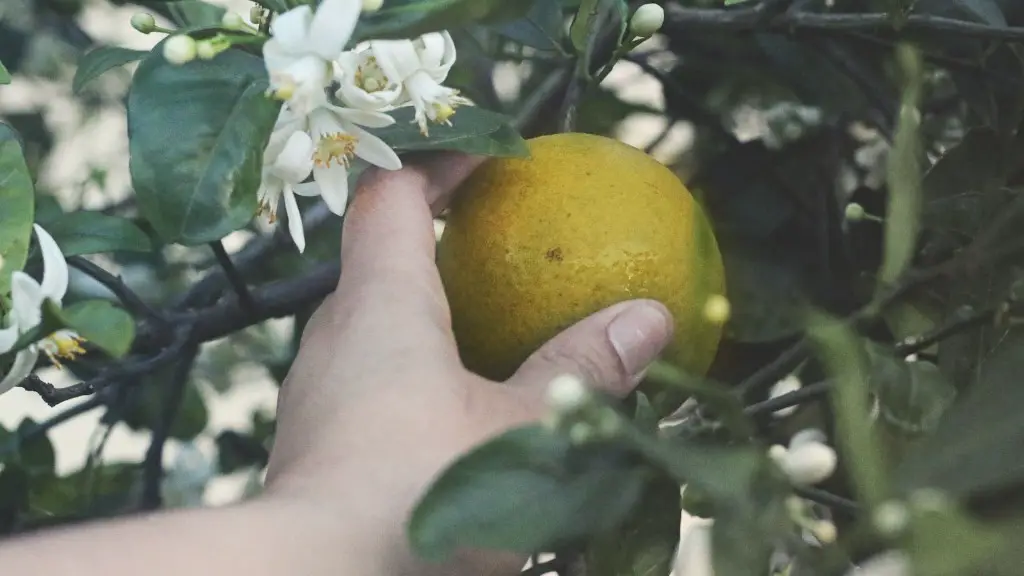When to transplant lemon tree seedlings is an important question for gardeners. Lemon trees are sensitive to temperature and soil quality, and transplanting too early or too late can cause permanent damage to the tree. Therefore, it is important to have an understanding of when the optimal time to transplant is, so that the trees are able to thrive.
The best time to transplant lemon tree seedlings is after they have had a chance to become well established. This usually occurs when they are between six to eight inches tall. Seedlings should be moved to a larger pot if they are continuing to grow rapidly, and it is important to make sure that the pot has adequate drainage and a loamy, loam-rich soil.
Moving lemon tree seedlings too soon can stunt their growth and prevent them from reaching maturity. An immature seedling may also lack certain nutrients, so it is important to wait until they are fully mature and established before transplanting. Seedlings can become root-bound if they are left in a small pot for too long, which can hinder the tree’s ability to absorb water and nutrients. Waiting until the roots have had a chance to expand and the soil can provide adequate nutrients is key.
It is also important to assess the environment before transplanting lemon tree seedlings. The climate should be warm enough to support germination and growth, and lemon trees prefer sunny and warm locations. If the area is too cold, the seedling’s growth may be stunted and the tree may not survive transplantation.
In order to ensure successful transplantation, gardeners should also take care to prepare the soil carefully. The soil should be moist and loamy, and it should contain plenty of organic matter such as compost. Additionally, gardeners should make sure to water the seedlings regularly to help them become acclimatized to their new environment.
Planting Conditions
When growing and transplanting lemon tree seedlings, conditions such as soil pH, nutrient availability, and light levels should all be taken into consideration. A soil pH of 6.0 to 7.0 is optimal, allowing for optimal nutrient uptake. Nutrients such as phosphorus, potassium, calcium, magnesium, and nitrogen are important for seedling growth, and should be available in the soil for the seedlings to access. A well-draining soil is also beneficial for successful transplants, as water can become stagnant and cause the roots to rot if not able to properly drain away from the tree.
When it comes to light, seedlings should be provided with as much light as possible. Lemon trees can tolerate partial shade, but full sun is preferred for optimal growth. Providing seedlings with enough light will help ensure that the tree is able to grow and develop properly.
Watering
Proper watering techniques should be used when transplanting lemon tree seedlings. Transplanting should be done during the cooler part of the day and with the roots submerged in a bucket of lukewarm water. This will help soften the soil and make it easier to handle and transplant. Once the seedling is planted, water it thoroughly and keep the soil moist but not soggy.
Fertilization
Fertilizing lemon tree seedlings is also important to ensure they have the nutrients they need to grow and develop. When transplanting, it is recommended to add a few tablespoon of a balanced fertilizer to the soil. This helps replenish nutrients and provide the tree with what it needs to thrive.
Pruning and Maintenance
Pruning and maintenance should be done regularly to keep the lemon tree healthy and thriving. Pruning should be done shortly after transplanting, to ensure that the new growth has enough room to branch and spread out without getting tangled. Pruning should also be done in the summer months, to help prevent diseases and pests from infecting the new seedlings.
Finally, maintenance such as mulching, weed control, and regular watering should be done in order to ensure the tree’s success and longevity. All of these tasks should be done regularly to keep the tree healthy and happy.
Wrap Up
Overall, the best time to transplant lemon tree seedlings is after they have grown around six to eight inches tall and when they are well-established. It is important to prepare the soil beforehand and water the seedlings properly. Additionally, providing them with adequate sunlight and nutrients, as well as pruning and maintenance, can also help ensure their success. Following these steps can give gardeners the best chance of healthy and thriving lemon trees.

